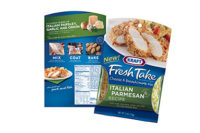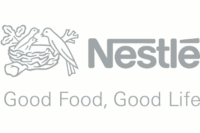
Nestlé USA leveraged its global expertise when designing its Nestlé production facility in the United States. The company’s expertise included incorporating elements of sustainability into the design of the plant in Anderson, Ind.
The plant, located on 190 acres, received Leadership in Energy and Environmental Design (LEED) certification from the U.S. Green Building Council, Washington, D.C. The green elements on the campus include a wastewater recovery system for reuse in cooling towers, low-emission natural gas boilers and skylights for natural light in the production area.
Sustainability also was considered when Nestlé selected Anderson, 20 minutes north of Indianapolis. Indiana was chosen for its central location and proximity to major highways, says Pamela Krebs, the former manager of division and brand affairs for the beverage division of Nestlé USA.
The 880,000 square feet of production and distribution space opened in March 2009. The plant has the space for raw material receiving and storage, PET bottle production, mixing and aseptic bottling of Coffee-mate liquid non-dairy creamers and ready-to-drink Nesquik flavored milk and warehousing of the finished products.

The plant maintains a 24-hour, seven-day-a-week production schedule to keep up with national demand for its products. Production is determined through weekly schedules based on sales forecasts and supply chain data, says site manager Michael Strong. The four bottling lines can run a range of package sizes from 8-ounce Nesquik to 32-ounce Coffee-mate.
The Anderson site manufactures its own pre-forms and blowmolds from raw PET resin, which is received by rail. The plant is the first facility in the nation to receive approval from the U.S. Food and Drug Administration for PET aseptic production, which allows longer product shelf life; the company calls this “a major technological achievement.”
Manufacturing its own bottles gives the company added flexibility in its production schedules and is more environmentally friendly because it saves on shipping costs for pre-forms and bottles, the company says.
“With our ability to now offer a variety of shelf-stable products, Nestlé has been able to tap into new distribution channels, giving us a greater competitive advantage and expanded sales opportunities,” a company spokeswoman said.
From raw materials to packaged beverages
Sugar is received by rail and stored in silos, Strong says. The plant also has indoor loading docks to receive dry and liquid ingredients. Production begins with ingredient processing in which the dry ingredients are blended together in individual batches. Once the ingredients are blended, the liquid is sterilized through highly automated ultra-high temperature processing. The sterilization creates an aseptic product, which is held under sterile conditions until it is bottled.
“Our aseptic filling operation really is the point of differentiation when you look at us and a normal beverage facility,” Strong says. “It’s really that filling operation combined with our processing that gives us the aseptic product, which you see really transforming the industry.”
After filling, the products flow onto the bottling lines where shrink sleeves are applied and the products are packed into cases. The cases are palletized and transferred to the adjacent warehouse, which runs on an automatic storage and retrieval system. Pallets are stored in the warehouse until they are picked by the AS/RS for manual loading onto a truck. The ambient products do not require refrigeration in the warehouse.
The shelf-stable nature of the products also saves on refrigeration in distribution by not requiring refrigerated trucks. Nor do customers need to chill the product until it’s on the shelf. In addition, the aseptic nature of the products provides production flexibility because the products can be produced in advance and stored. Asceptic products maintain a long shelf life for customers.
Aseptic advantages
The plant’s aseptic production has transformed Nestlé’s beverage business. The company says aseptic filling retains more nutrients, uses less sugar and is more energy efficient. The shelf-stable products also have created new opportunities for distribution, says Joe Melone, sales director for Nestlé’s direct-store-distribution beverage sales force.
“Prior to Anderson and having shelf-stable capability, we were pretty much confined to a refrigerated distribution channel from manufacturing to getting product on the shelf,” Melone says. “Now with shelf-stable products, that opens the door considerably to a whole new go-to-market strategy with a whole new set of distributors.”
The Anderson plant produces only Nesquik and Coffee-mate, but the beverage sales force handles Nestlé’s entire beverage portfolio, including Juicy Juice. In 2007, the sales force transformed from a 20-person staff focused on chilled beverages to an expanded nationwide network of DSD beverage salespeople.
The benefits of shelf-stable products also are fueling the growth of the Anderson plant, the company says. Nestlé has been able to secure placement on children’s menus in many foodservice accounts, Disneyland theme park and at colleges and universities across the country, which has increased the production demand, Krebs says.
“In a very positive way, it’s a never-ending cycle – you make a product that’s more versatile, you’ll have more customers,” she says. “You make more customers, you need more product, and so on.”
Flexibility of Anderson’s lines allows for the opportunity for production of new products in the future, she says. Products in Nestlé’s pipeline also will take advantage of the DSD beverage sales force and expanded distribution network, Krebs says.
“As [new beverage] products are launched and introduced, this will be a great way to really get the expansion out there and increase the availability so as consumers are able to enjoy them, they are able to find them wherever they are looking for them,” she says.

AT a glance
Nestlé USALocation: Anderson, Ind.
Year Opened: March 2009
Size: 880,000 square feet of production and distribution space on 190 acres
Employees: 550
Products made: Ready-to-drink Nesquik flavored milk, Coffee-mate liquid non-dairy creamers in PET bottles
Processing capacity: Four bottling lines running a range of package sizes, from 8-ounce Nesquik to 32-ounce Coffee-mate. The plant maintains a 24-hour, seven-day-a-week production schedule.
Packaging: The plant manufactures its own pre-forms and blowmolds from raw PET resin, which is received by rail.

